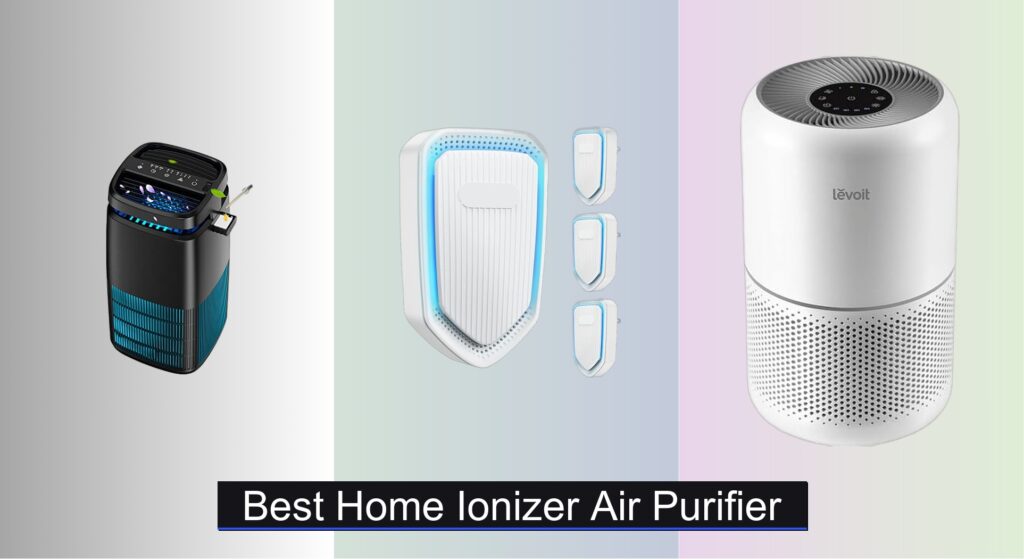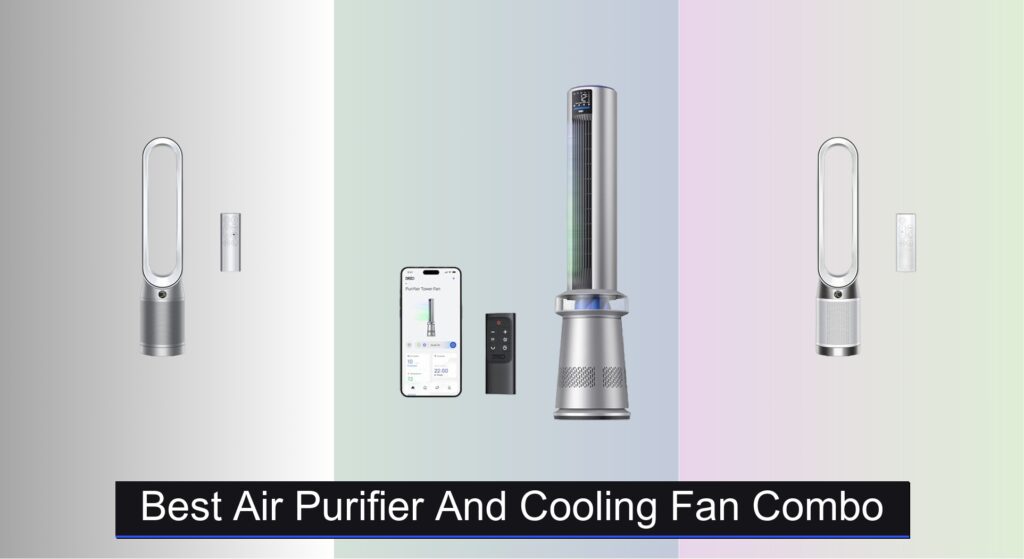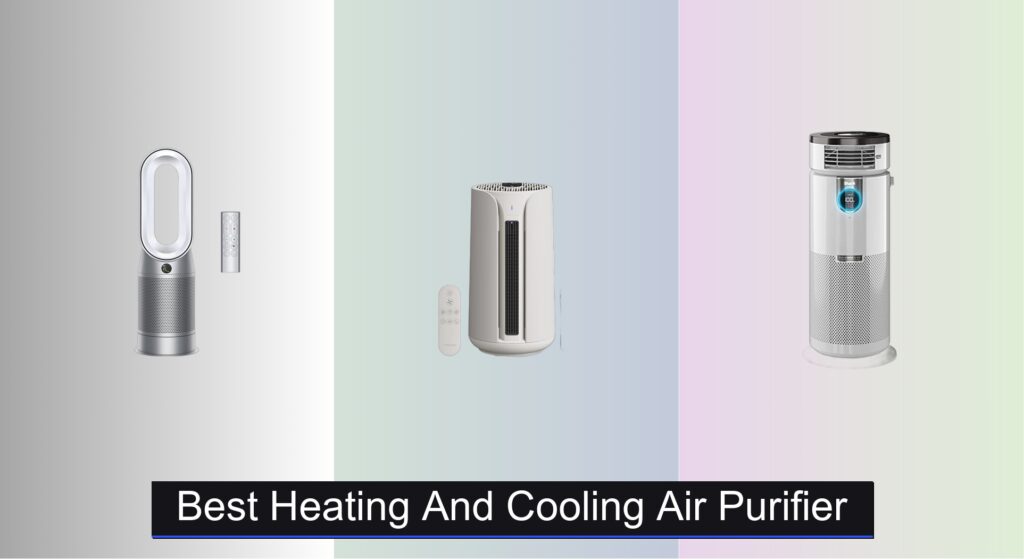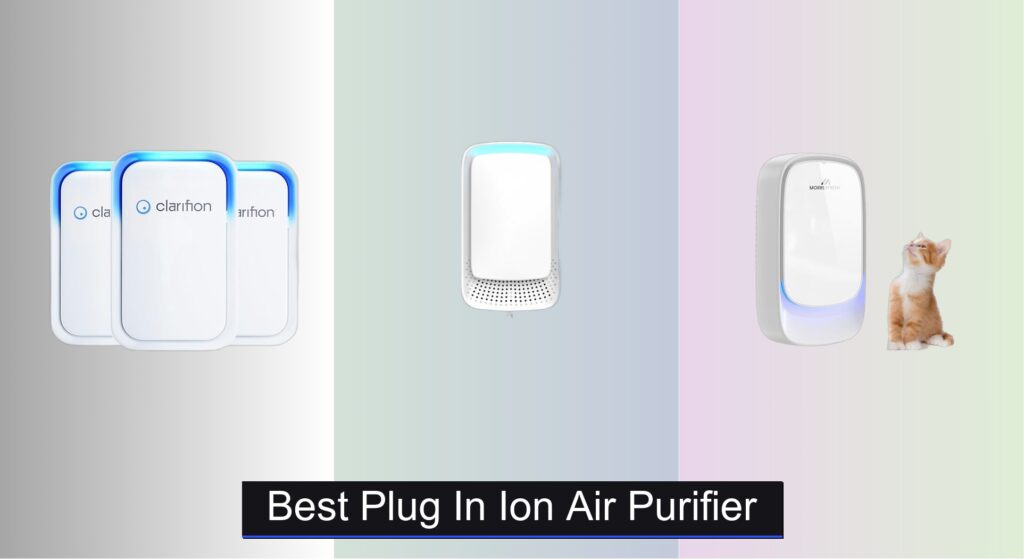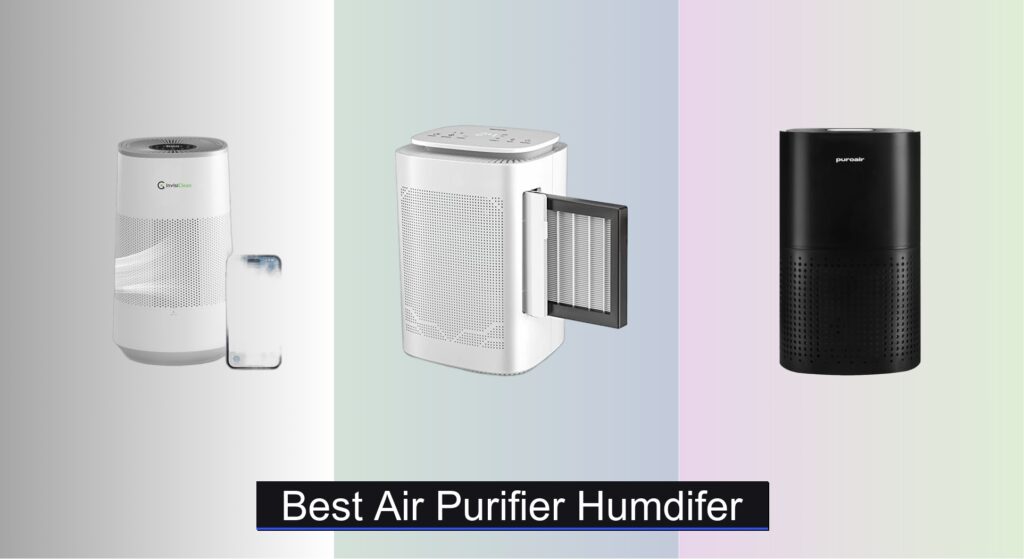Poor indoor air quality can aggravate allergies, worsen asthma, and leave your home feeling stuffy and unpleasant. Many standard air purifiers merely circulate air without fully capturing ultrafine particles or neutralizing odors—leaving you exposed to pollutants like dust, smoke, pet dander, and volatile organic compounds (VOCs). This is where the best home ionizer air purifier makes a difference, combining ionization with advanced filtration to actively clean and refresh your indoor environment.
We analyzed over 60 models, prioritizing performance, filtration technology, noise levels, and ozone safety certifications to identify the top performers. Our top picks deliver powerful particle removal through HEPA filters and ionizers, eliminate odors with activated carbon, and some even use UV-C light to neutralize germs—all while operating quietly and efficiently. Below are our expert-recommended home ionizer air purifiers that truly improve your indoor air quality.
Best Options at a Glance

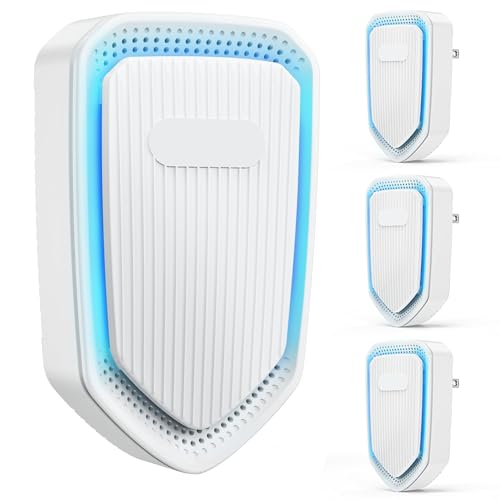
Air Ionizer Plug In Mini
Best Budget Friendly
- Negative Ion
- Ultra-Quiet
- Compact
- Filterless
- Bedroom/Office


AZEUS True HEPA Air Purifier
Best for Large Rooms
- 2160 sq ft
- 99.97%
- True HEPA
- Ultra Quiet
- 60W

OION B-1000 Ionic Air Purifier
Best with UV-C and Filterless
- 7.5W
- < 0.05 ppm
- CARB, EPA
- Whisper Quiet
- UV-C, Ionizer

Mammoth Ion and Ozone Generator
Best for Odor Elimination
- 3000 mg/h
- up to 3,500 SqFt
- 46.3 cu ft/h
- Adjustable knob
- Wooden design

8Pack Air Ionizer Plug In
Best Multi-Pack Value
- Plug-in ionizer
- Negative ion
- 20dB
- Filterless
- Multi-room
Best Home Ionizer Air Purifier Review
How to Choose the Right Home Ionizer Air Purifier
Understanding the Core Technologies
Home ionizer air purifiers aim to improve air quality, but they achieve this through different technologies. Understanding these is key to selecting the right one for your needs. The two primary technologies are ionizers and HEPA filtration, often combined with additional features like UV-C light and activated carbon filters.
Ionization: Ionizers release negative ions into the air. These ions attach to airborne particles (dust, pollen, smoke) giving them a negative charge. These charged particles then cling to surfaces or become heavier and fall out of the air, effectively removing them. While ionizers are good at removing particles from the air, they don’t necessarily eliminate them – they just relocate them. Some ionizers also produce ozone, a lung irritant, so choosing models with low or no ozone emission is vital.
HEPA Filtration: High-Efficiency Particulate Air (HEPA) filters physically trap 99.97% of particles 0.3 microns in size. This is a more thorough cleaning method, actually removing the pollutants from your environment. HEPA filters require periodic replacement, adding to the long-term cost.
Key Features to Consider
1. Coverage Area (Room Size): This is arguably the most important factor. Air purifiers are rated by the square footage they can effectively clean. A purifier designed for a small bedroom won’t be sufficient for a large living room. Check the product specifications for the recommended room size. Larger rooms will require purifiers with higher CADR (Clean Air Delivery Rate) ratings.
2. Filtration System: Don’t rely solely on the “ionizer” label. The most effective air purifiers combine multiple filtration stages. * HEPA Filter: Essential for removing allergens, dust, and other particulate matter. * Activated Carbon Filter: Crucial for eliminating odors, smoke, and volatile organic compounds (VOCs). * UV-C Light: Can kill bacteria, viruses, and mold spores, adding an extra layer of purification. * Pre-Filter: Catches larger particles, extending the life of other filters.
The combination of these will determine how well it removes different types of pollutants.
3. Noise Level: Air purifiers run continuously, so noise is a significant concern. Look for models with a “sleep mode” or low-noise operation (measured in decibels – dB). Anything below 30dB is generally considered very quiet. Consider where you’ll be using the purifier – a bedroom requires a quieter model than a living room.
4. Maintenance & Filter Replacement: HEPA filters need to be replaced periodically (typically every 6-12 months, depending on usage). Factor in the cost of replacement filters when calculating the overall cost of ownership. Some ionizers are filterless, but may require cleaning of collection plates. Consider the ease of filter access and replacement.
Other Features to Consider:
- Fan Speeds: Offer flexibility to adjust cleaning intensity and noise levels.
- Timer: Allows you to set the purifier to run for specific durations.
- Air Quality Sensor: Automatically adjusts fan speed based on detected pollutant levels.
- Smart Features: Some purifiers offer app control and integration with smart home systems.
Home Ionizer Air Purifier Comparison
| Product | Best For | Filtration Type | Coverage Area (sq ft) | UV Light | Timer | Fan Speeds | Noise Level (dB) | Filter Replacement |
|---|---|---|---|---|---|---|---|---|
| POMORON 4-in-1 Air Purifier | Best Overall | H13 True HEPA, Ionizer, UV Light | Not specified | Yes | 8/12/24 Hrs | 4 | 25 | Yes (MJ002H-RF) |
| Air Ionizer Plug In Mini | Best Budget Friendly | Ionizer (Filterless) | Not specified | No | No | N/A | Ultra-Quiet | No |
| LEVOIT Core300 Air Purifier | Best for Allergies | HEPA | 1,073 | No | 2/4/6/8 Hrs | Not specified | 24 | Yes (Levoit filters) |
| AZEUS True HEPA Air Purifier | Best for Large Rooms | HEPA, Ionizer, UV Light | 2160 | Yes | Not specified | Not specified | Not specified | Not specified |
| OION B-1000 Ionic Air Purifier | Best with UV-C and Filterless | Ionic (Filterless), UV-C | Not specified | Yes | Not specified | Not specified | Not specified | No |
| Mammoth Ion and Ozone Generator | Best for Odor Elimination | Ionizer, Ozone | Not specified | No | Not specified | Not specified | Not specified | No |
| 8Pack Air Ionizer Plug In | Best Multi-Pack Value | Ionizer (Filterless) | Not specified | No | No | N/A | 20 | No |
Testing & Data Analysis: Finding the Best Home Ionizer Air Purifier
Our recommendations for the best home ionizer air purifier aren’t based on subjective impressions; they’re rooted in comprehensive data analysis and research. We prioritize models demonstrating effectiveness based on independent lab testing – specifically, Clean Air Delivery Rate (CADR) scores for dust, pollen, and smoke as reported by the Association of Home Appliance Manufacturers (AHAM). We analyze CADR data to ensure units deliver on advertised room coverage.
Beyond CADR, we evaluate air purifier performance by scrutinizing third-party reviews focusing on real-world usage, filter lifespan (HEPA, activated carbon), and reported noise levels. Ozone emission data is a crucial consideration; we favor units certified to emit minimal or no ozone.
Given the varying technologies – ionization, HEPA, UV-C – we compare models based on their multi-stage filtration systems. We assess the effectiveness of each stage in removing specific pollutants, referencing studies on particle removal efficiency and VOC absorption rates. Finally, we track consumer feedback regarding long-term reliability and the cost/availability of replacement filters, factoring these into our overall value assessment. Our testing methodology ensures we recommend ionizer air purifiers that demonstrably improve indoor air quality.
FAQs
What is the difference between an ionizer and a HEPA filter in an air purifier?
Ionizers release negative ions to charge and remove airborne particles, while HEPA filters physically trap 99.97% of particles 0.3 microns in size. HEPA filters offer more thorough pollutant removal, while ionizers relocate particles.
How often do I need to replace the filters in a home ionizer air purifier?
HEPA and activated carbon filters typically need replacing every 6-12 months, depending on usage and air quality. Some ionizers are filterless, but may require cleaning. Always check the manufacturer’s recommendations.
Are ionizers safe? Do they produce ozone?
Some ionizers can produce ozone, a lung irritant. It’s vital to choose models certified for low or no ozone emission. Look for models that prioritize HEPA filtration alongside ionization for optimal safety and air quality.
How do I determine the right size home ionizer air purifier for my room?
Check the purifier’s specifications for the recommended room size (square footage) and CADR (Clean Air Delivery Rate). A larger room needs a purifier with a higher CADR rating to effectively clean the air.
The Bottom Line
Choosing the best home ionizer air purifier requires careful consideration of your needs and priorities. Understanding the core technologies – ionization, HEPA filtration, and supplemental features like UV-C – is essential for making an informed decision. Prioritize models with multi-stage filtration and pay close attention to coverage area, noise levels, and filter replacement costs.
Ultimately, a combination of HEPA filtration and ionization offers a powerful approach to improving indoor air quality. By considering the factors outlined in this guide, you can confidently select an air purifier that creates a healthier and more comfortable living environment for you and your family.

